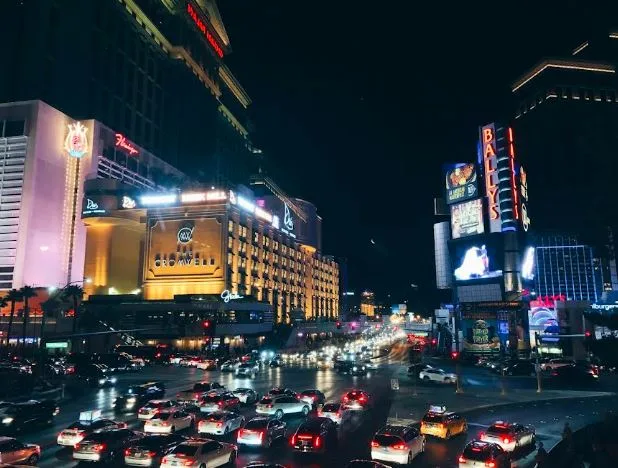Traffic Laws and Local Rules to Know When Driving in Las Vegas
Las Vegas might be world-famous for its incredible nightlife and those iconic neon lights, but let me tell you, it’s also got some seriously busy roads and unique traffic situations that can catch even seasoned drivers completely off guard. We’re talking about everything from trying to navigate the chaos of the Strip to figuring out local speed limits and understanding who has the right-of-way in various situations.
Knowing the traffic laws here isn’t just about avoiding tickets, though that’s definitely important when you’re trying to have a good time without breaking the bank. It’s really about keeping yourself and everyone else safe while you’re getting around the city.
The reality is that driving in Las Vegas comes with some real risks. The statistics are pretty sobering – we’re talking about thousands of people getting injured in traffic accidents across the city every year. That’s a reminder that you need to stay alert and informed about local laws, whether you’re just visiting or you’ve recently moved here.
Whether you’re a tourist who just picked up a rental car or a new resident trying to figure out how things work around here, here’s what you absolutely need to know to drive safely and legally in Las Vegas.
Speed Limits and School Zones
Las Vegas speed limits are pretty straightforward for the most part, but there are some local quirks you should know about. Most city streets have speed limits between 25 and 35 mph, while highways and freeways typically allow 65 to 75 mph depending on the specific road.
The Strip area is where things get interesting. Speed limits are often lower than you might expect because of all the pedestrian traffic, especially at night when people are walking between casinos and might not be paying the best attention to where they’re going.
School zones are absolutely no joke in Las Vegas. When those lights are flashing, you need to slow down immediately and pay extra attention. The fines for speeding in school zones are steep, and enforcement is pretty strict. We’re talking about potentially hundreds of dollars in fines for what might seem like a minor violation.
Keep your eyes peeled for those flashing school zone lights, especially during the school year. They’re not always active, but when they are, you definitely don’t want to get caught going too fast.
Right-of-Way Rules and U-Turns
Las Vegas follows pretty standard right-of-way rules, but with all the tourists and unfamiliar drivers on the road, you can’t assume everyone knows what they’re doing. At intersections, yield to traffic that’s already in the intersection and to vehicles approaching from the right if you’re at a four-way stop.
Left turns can be tricky, especially on busy streets. Unless you have a protected green arrow, you need to yield to oncoming traffic. Don’t assume that gap is big enough – Las Vegas drivers can be pretty aggressive, and you don’t want to get caught in the middle of an intersection.
U-turns are legal at most intersections in Las Vegas unless there’s a sign specifically prohibiting them. Just make sure you can complete the turn safely without interfering with other traffic. Some intersections, particularly on major roads, have “No U-Turn” signs, so always check before you commit.
Pedestrian right-of-way is huge, especially on and around the Strip. Pedestrians have the right-of-way in crosswalks, and with all the foot traffic in tourist areas, you need to be constantly watching for people crossing the street.
Cell Phone and Distracted Driving Laws
Nevada has pretty strict laws about cell phone use while driving. You can’t use a handheld device to talk, text, or do anything else while you’re behind the wheel. This includes checking social media, taking photos, or any other handheld phone activities.
You can use hands-free devices like Bluetooth or voice-activated systems, and GPS is allowed as long as you’re not physically manipulating the device while driving. If you need to input a destination or change settings, pull over safely first.
The fines for violating these laws start around $50 for a first offense but can go up significantly for repeat violations. In tourist-heavy areas like the Strip, enforcement is particularly strict because of the high pedestrian traffic and accident risk.
Don’t think you can get away with quick texts at red lights either. If you’re in the driver’s seat with the engine running, the law considers you to be driving, even if you’re stopped.
Conclusion
Driving in Las Vegas really does require more than just basic driving skills and patience. You need to understand the local traffic laws and stay constantly aware of your surroundings, especially in high-traffic areas like the Strip where anything can happen at any moment.
From those strict DUI laws to the pedestrian-heavy crosswalks and unique Strip challenges, knowing the rules helps you avoid expensive tickets, dangerous accidents, and unnecessary stress during your time in the city.
With thousands of traffic-related injuries happening in Las Vegas every year, staying informed and driving defensively is honestly one of the best ways to protect yourself and everyone else sharing the road.
So whether you’re cruising down the Strip to check out the sights or exploring the areas beyond all those neon lights, drive smart, stay alert, and enjoy your time in Las Vegas safely.




